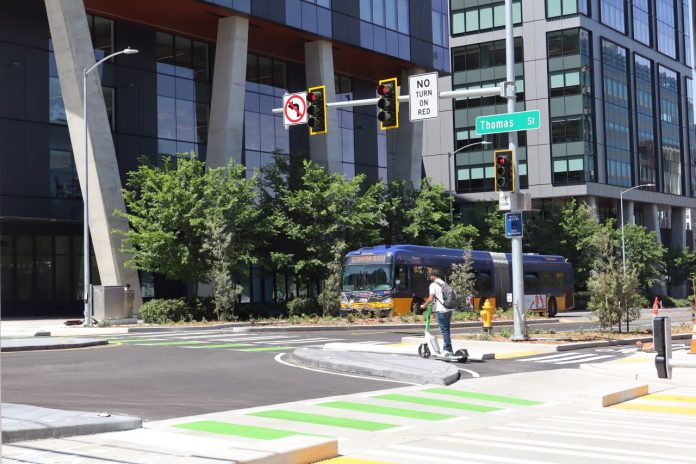
Seattle recently reached a milestone as the first protected intersection in city history opened at Dexter Avenue and Thomas Street. People biking, scooting, walking, rolling, and driving through this busy intersection are now interacting in a new way that research, and implementation in cities across the country, have shown cuts down on the risk of collisions, especially high-speed ones that cause serious injuries or deaths.
Unfortunately the project came too late to save the life of Jaahnavi Kandula, a graduate student who was killed crossing Dexter by Seattle police officer Kevin Dave who was speeding through at 74mph to respond to a call in January 2023. Given the recklessness of Officer Dave’s driving, it’s not certain that the protected intersection would have saved Kandula’s life, but it certainly would have given her a better shot.
City policymakers accelerated delivery of the long-delayed project following the high-profile fatal collision, which made national news after Seattle Police Officers Guild leadership was recorded in body camera audio laughing at her death, and joking Kandula was “low value.” Meanwhile, Dave couldn’t even be bothered to pay the $5,000 fine levied by City Attorney Ann Davison’s office, after the King County Prosecutor’s Office declined to pursue criminal charges.
The protected intersection has long been planned as part of a “green street” on a “redefined” Thomas called out in plans to reconnect the street grid after the SR 99 tunnel went into place and to upgrade transportation to a renovated Seattle Center Arena (now called Climate Pledge Arena). But the protected intersection had been repeatedly delayed due to budget cuts.
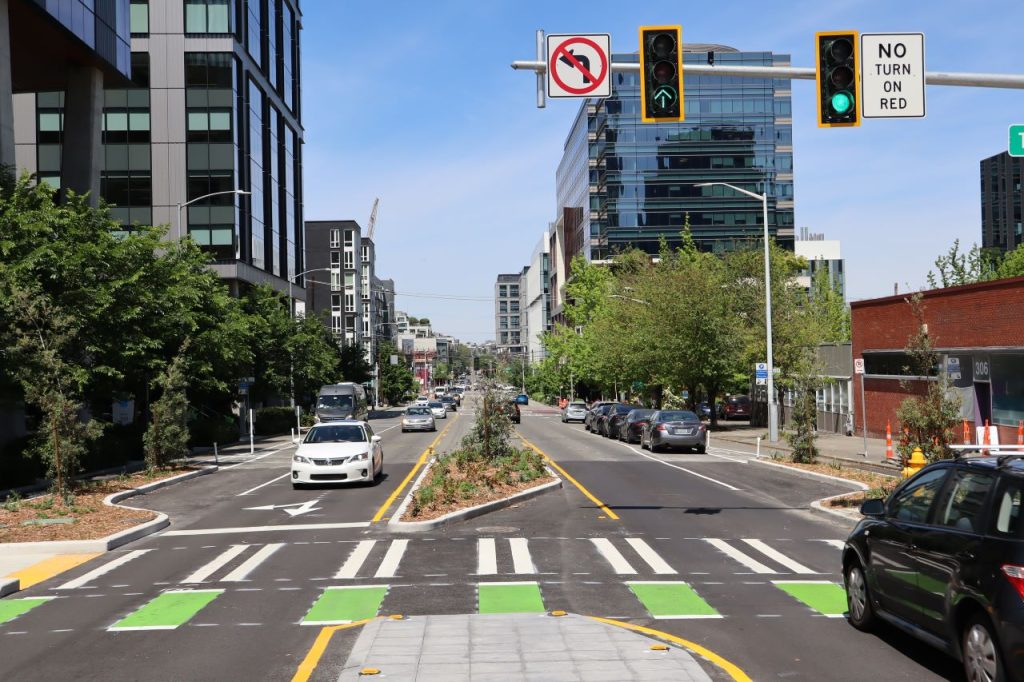
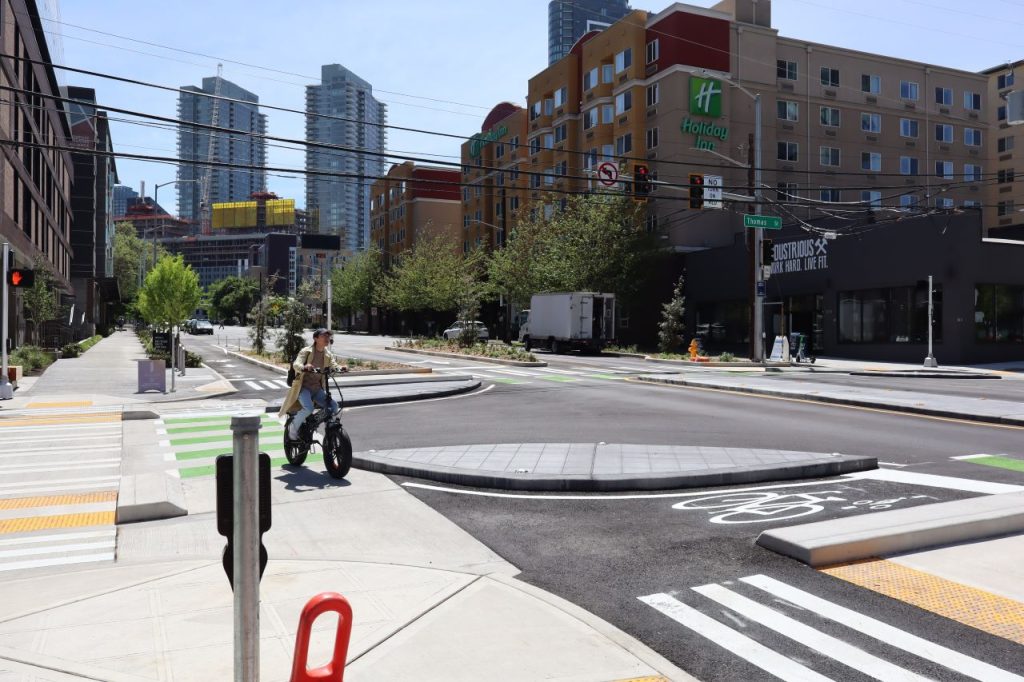
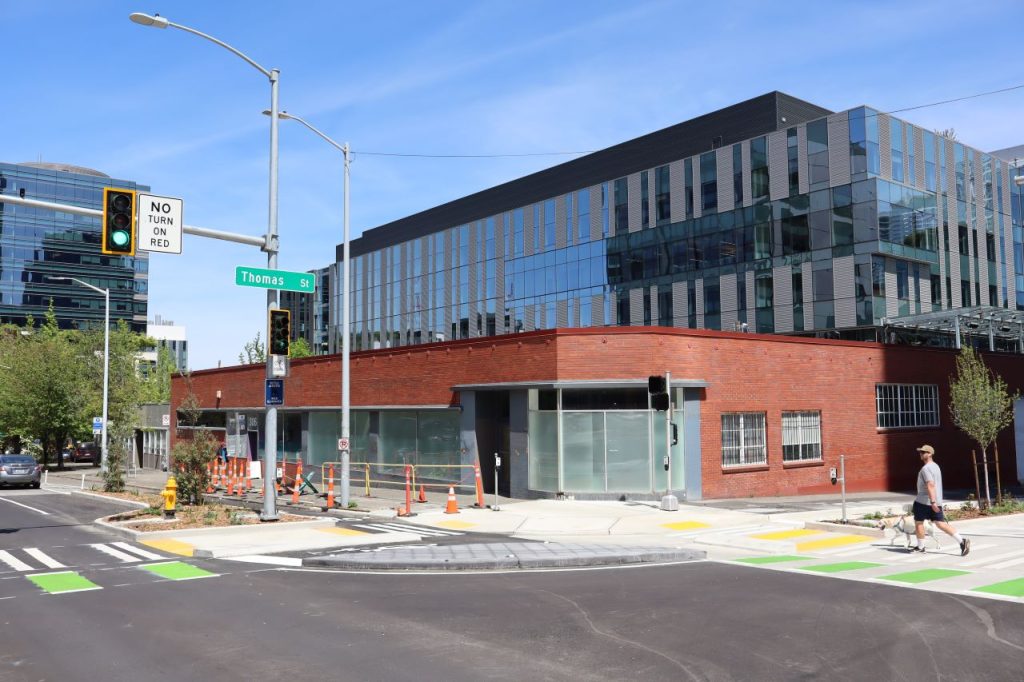
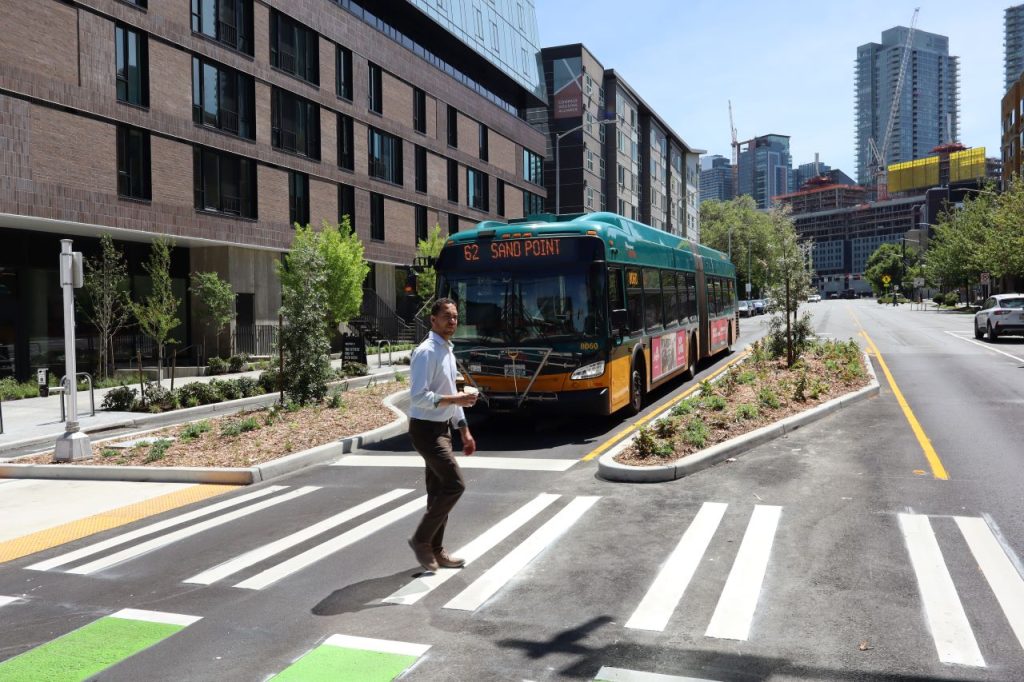
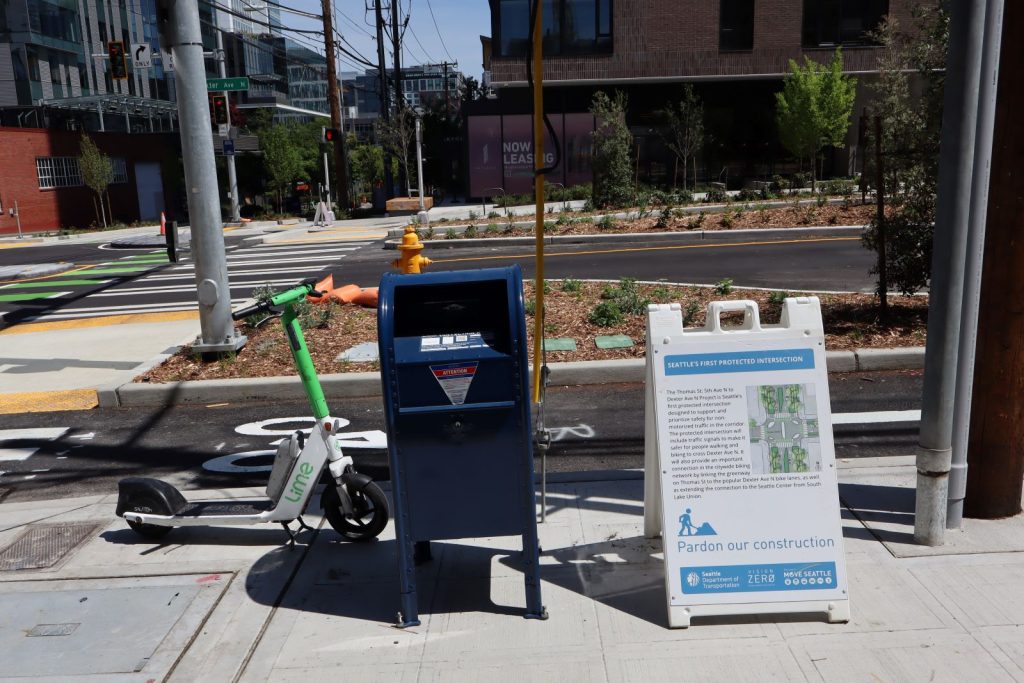
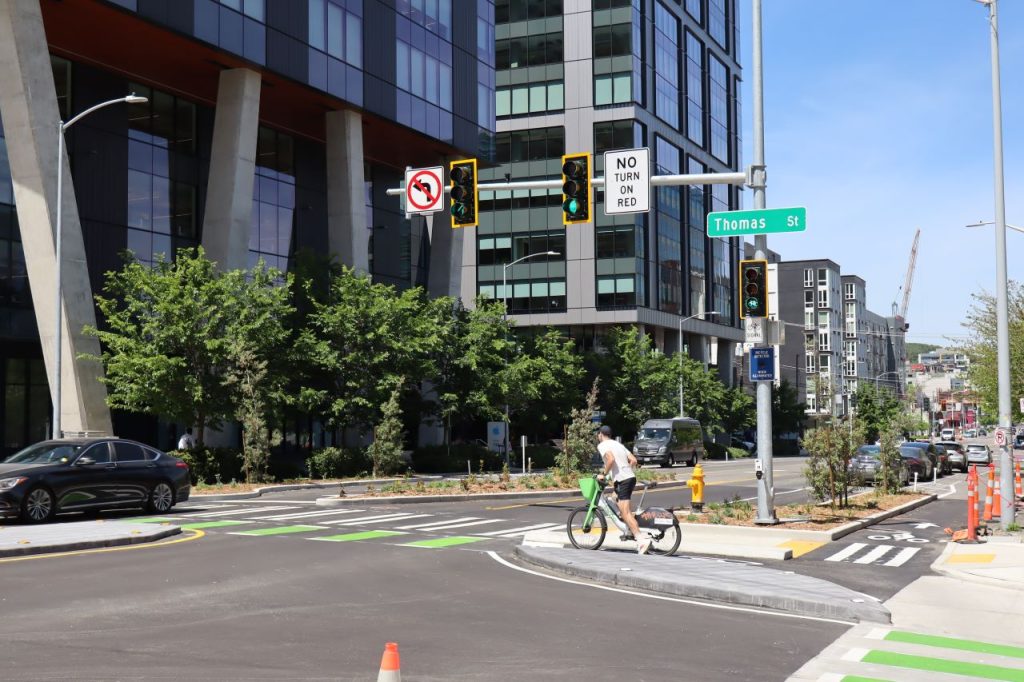
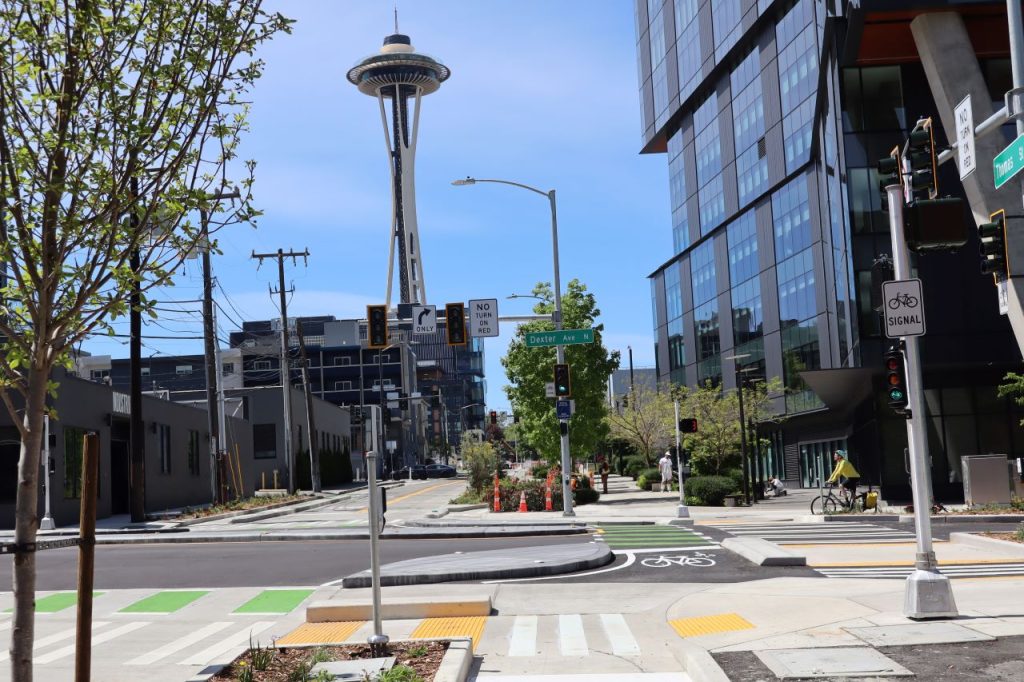
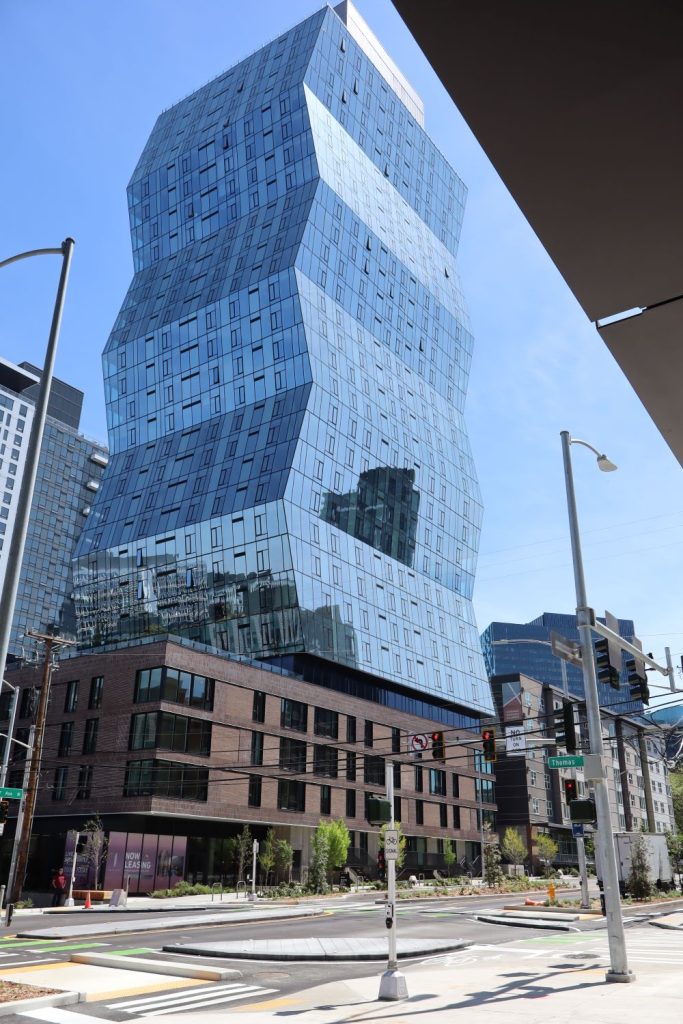
The Seattle Department of Transportation (SDOT) finished installation of the new intersection this month and announced its arrival in a May 10 blog post, which noted the benefits of protected intersections that have been borne out in numerous studies: “Protected intersections are recommended by National Association of City Transportation Officials (NACTO) as a proven safety upgrade. This modern design increases visibility and reduces turning conflicts. A Federal Highway Administration report identifies numerous safety benefits and a survey taken at San Francisco’s first protected intersection resulted in 96% of drivers yielding to people on bikes, and 100% yielding to people walking.”
Doing a full 360-degree loop around Seattle’s new protected intersection. pic.twitter.com/0h5BaQAmOY
— Qagggy! (@Qagggy) May 12, 2024
The design also includes a traffic diverter that prevents through car traffic on Thomas Street, making permanent an earlier temporary treatment, while offering pedestrians a large median refuge as they cross Dexter.
Gordon Padelford, who is executive director of safe streets advocacy powerhouse Seattle Neighborhood Greenways, heralded the opening and hoped it marked the beginning of a major trend. “Toronto barriers and protected intersections (first one in Seattle is being built at Thomas Street/Dexter) are the future of bike lanes, for two main reasons: 1) Safety: provide a much higher level of safety than floppy posts and paint 2) Comfort: encourage more people to bike,” Padelford said in a tweet.
While it’s the first instance of this design in Seattle, Bellevue has already implemented two protected intersections. Bellevue’s first went into place in 2020 at the intersection of Spring Boulevard and 120th Avenue NE.
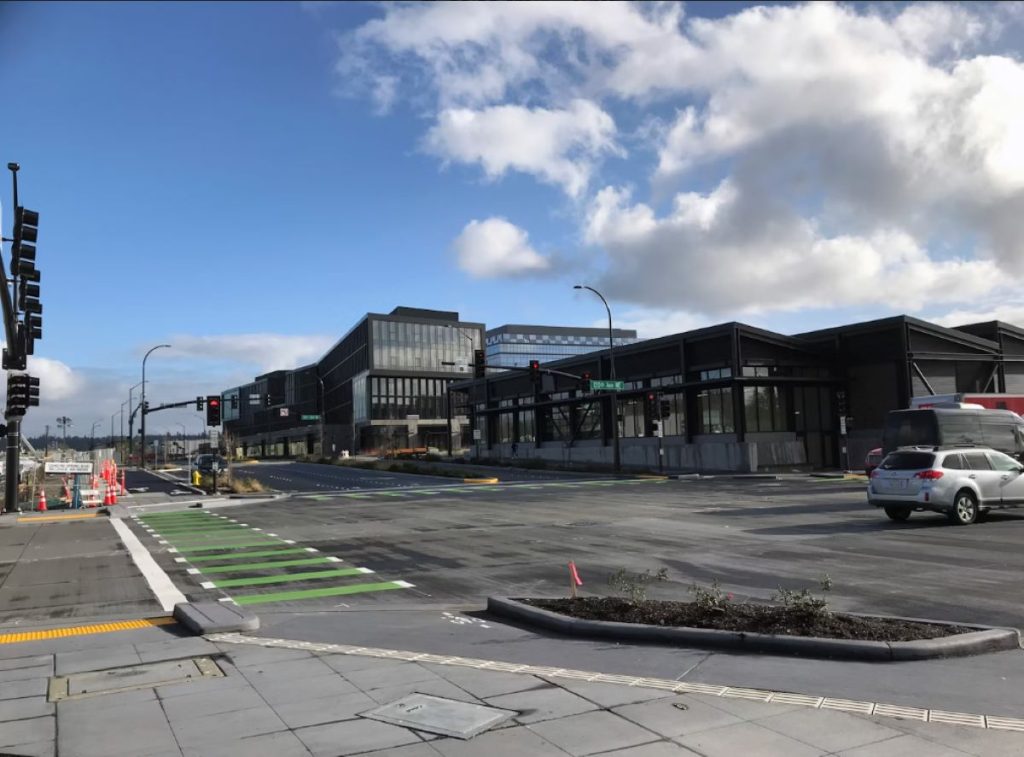
While the Seattle Times referred to the new treatment on Dexter as a “Dutch-style intersection,” neither Seattle nor Bellevue have reached leading Dutch standards, which generally allow for higher volumes of people biking with wider lanes signals that allow bidirectional bike movements. As The Urbanist has pointed out before, while Seattle is making strides in designing safe streets for people biking, rolling, and walking, the next step is to plan for the popularity of the network with wider bike lanes and sidewalks.
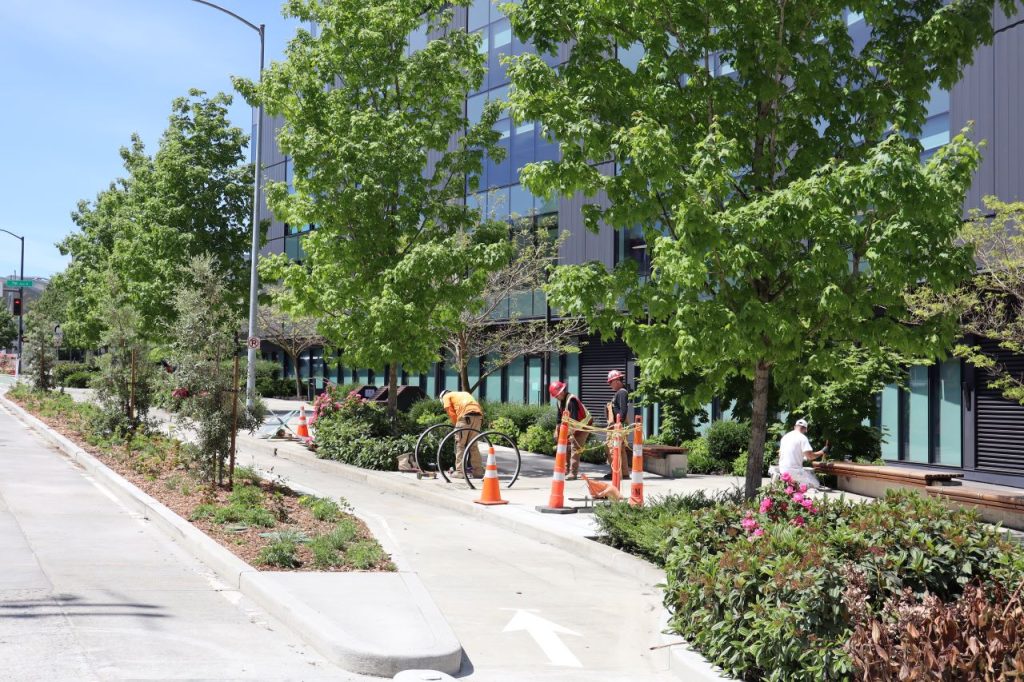
The other issue with the protected intersection is that Dexter’s nearby intersections with busy Denny Way and Mercer Street remain car-centric and decidedly unprotected. A person biking can feel very safe going through the Thomas Street protected intersection only to experience the indignity of waiting in gutter bike lanes and dodging cars at car-choked intersections at those neighboring arterial roads, which frequently deal with illegal turns that block the intersection and the crosswalks and bike lanes suggested with pavement markings.
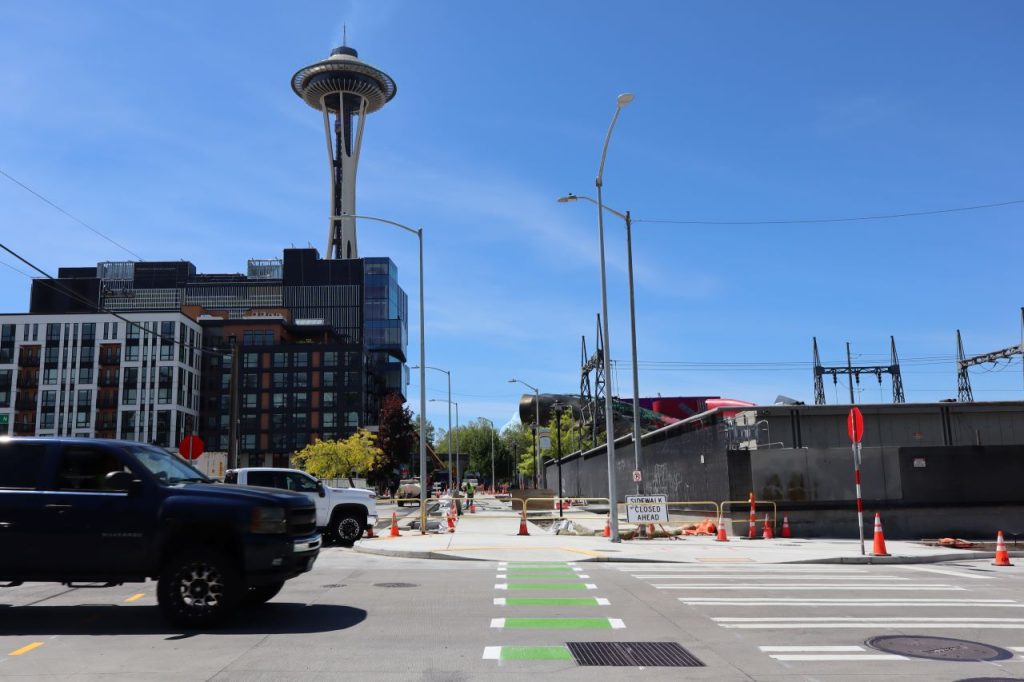
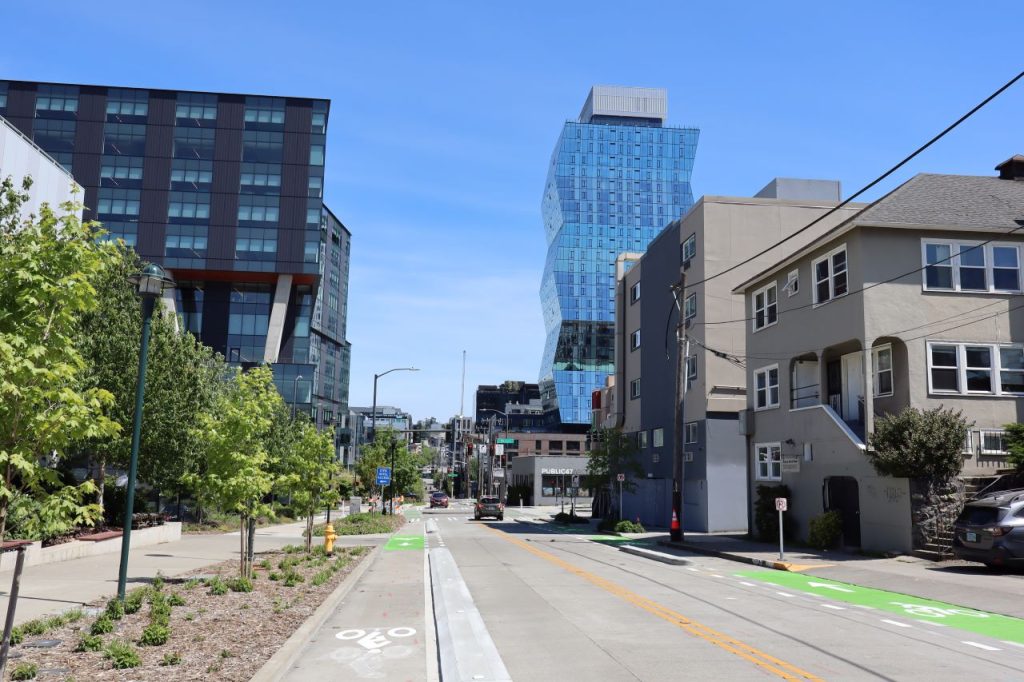
SDOT’s work to add leading pedestrian intervals and hardened barriers to protect bike lanes could offer some help, but until motorists respect the bike lanes and crosswalks through the intersection and the speed limits on wide arterials, such intersections can only be so safe.
Cool aerial view of our newly-opened protected intersection at Dexter & Thomas pic.twitter.com/zet9AXDb8Y
— Greg Spotts (@Spottnik) May 13, 2024
Once Downtown Seattle’s second light rail tunnel opens (currently slated for 2039 as part of Ballard Link), the area will see even more pedestrian and bike traffic, as the two stations planned nearby — one on Harrison Street and one near Westlake and Denny Way — are expected to be among the busiest on the line. Safe intersections near all those embarking and disembarking passengers will be key. Even before light rail’s arrival, rapid population growth in South Lake Union and Uptown will continue to put more strain on local transportation infrastructure.
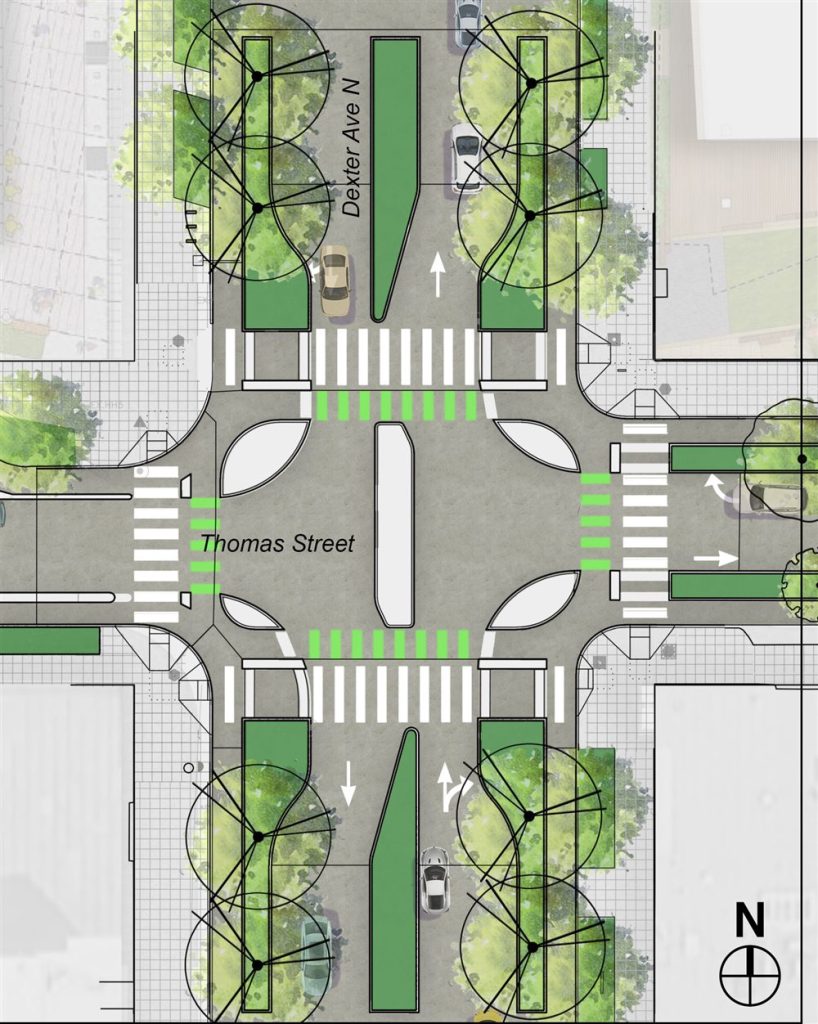
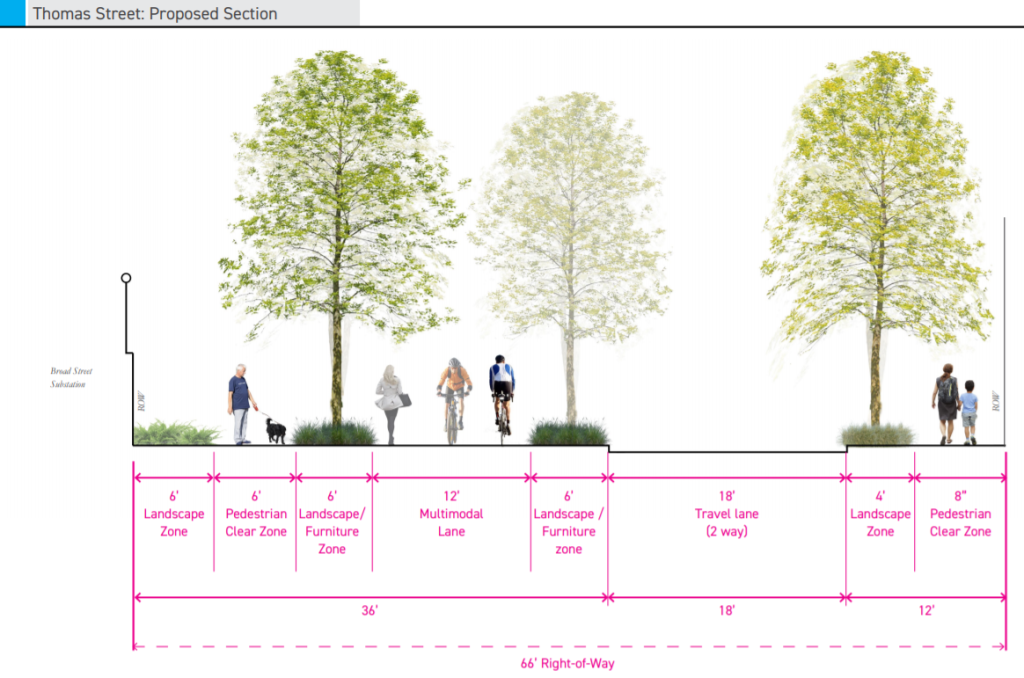
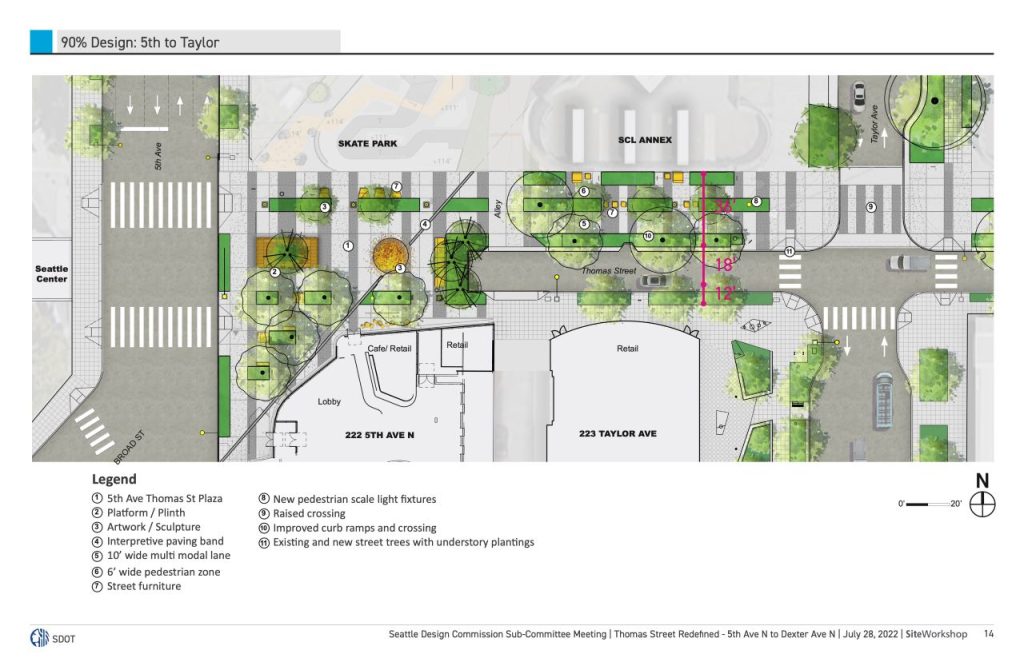
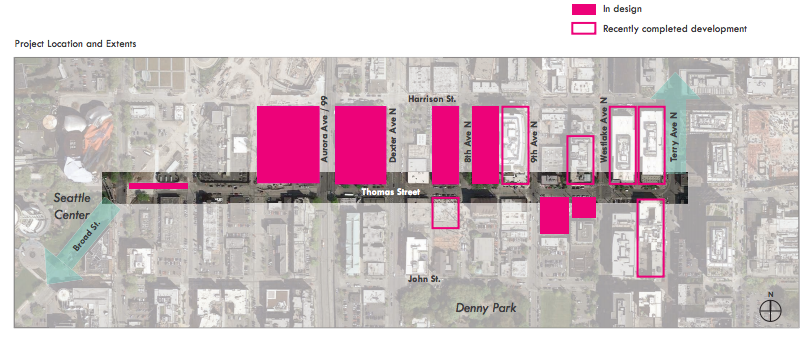
The City of Seattle declared war on traffic fatalities in 2015 with its Vision Zero pledge to end traffic deaths by 2030. It’s a shame it took until 2024 to get the city’s first protected intersection, but it is a sign Seattle is finally taking serious steps to turn the tide in a war that automobiles are currently winning with an annual toll of about 30 dead in crashes each year focused on trouble spots along high-speed arterials. Protected intersections could make some of those injury-crash hotspots disappear, giving Seattle momentum in its Vision Zero quest.
Doug Trumm is publisher of The Urbanist. An Urbanist writer since 2015, he dreams of pedestrian streets, bus lanes, and a mass-timber building spree to end our housing crisis. He graduated from the Evans School of Public Policy and Governance at the University of Washington in 2019. He lives in Seattle's Fremont neighborhood and loves to explore the city by foot and by bike.

